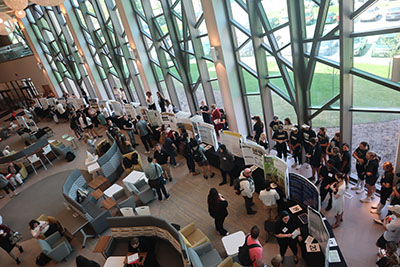Student Type
Undergraduate
College Affiliation
College of Science, Technology, and Health
Department
Athletic Training, Exercise Science
Submission Type
Poster
Abstract
After an injury occurs, there are many physiological regressions that occur. These regressions lead to altered muscle thickness, muscle length, strength and power potentials, motor recruitment, and neuromuscular control. These variables are further exacerbated if the given injury requires surgical intervention. Rehabilitation aids in reducing these regressions and is important both pre-surgery and post-surgery when intervention beyond rehabilitation is needed. Ultrasound imaging can be utilized to monitor the progression of a muscle's specific muscles anatomy. The muscles of interest are dependent upon the injury, The purpose of this study is to monitor short-term muscular adaptations to establish their importance in injury rehabilitation. A secondary purpose is to determine the importance of monitoring the development of these physiological properties in the return-to-play process. The specific physiological factor of interest in this case study is pennation angle, but multiple will be assessed and analyzed.
Recommended Citation
Andrews, Nicholas; Mumford, Petey; and Tighe, Lauren, "Assessment of Muscular Anatomical and Physiological Development During Injury Rehabilitation" (2023). 2023 Student Academic Showcase. 3.
https://digitalcommons.lindenwood.edu/src_2023/Posters/Session2/3
Included in
Assessment of Muscular Anatomical and Physiological Development During Injury Rehabilitation
After an injury occurs, there are many physiological regressions that occur. These regressions lead to altered muscle thickness, muscle length, strength and power potentials, motor recruitment, and neuromuscular control. These variables are further exacerbated if the given injury requires surgical intervention. Rehabilitation aids in reducing these regressions and is important both pre-surgery and post-surgery when intervention beyond rehabilitation is needed. Ultrasound imaging can be utilized to monitor the progression of a muscle's specific muscles anatomy. The muscles of interest are dependent upon the injury, The purpose of this study is to monitor short-term muscular adaptations to establish their importance in injury rehabilitation. A secondary purpose is to determine the importance of monitoring the development of these physiological properties in the return-to-play process. The specific physiological factor of interest in this case study is pennation angle, but multiple will be assessed and analyzed.


